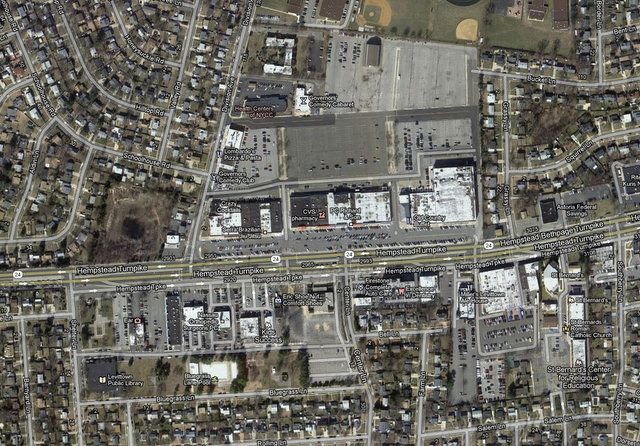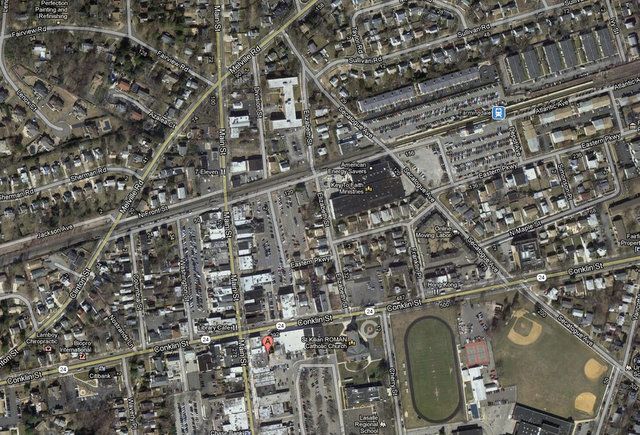How to Make a Subway Map with John Tauranac
Hear from an author and map designer who has been creating maps of the NYC subway, officially and unofficially, for over forty years!

In this latest iteration of our collaborative series, On Data and Cities, with Gehl Institute in Copenhagen, we jump off the Institute’s call for greater clarity in what exactly constitutes a “metropolitan region.” In their most recent post, they cite the case of Melbourne, Australia, recently hailed by The Economist as the world’s most livable city, and point out that the Australian and Canadian cities that consistently top The Economist’s liveability indexes do so in large part due to their suburban densities. Livability indexes generally comingle urban, suburban and rural data, which can confuse residents and negatively impact their lifestyle decisions.
Gehl states that people have been leaving the city of Melbourne to pursue what they perceive as healthier lifestyles in the suburbs, despite contradictory collective knowledge. Analogously, stating that the majority of the world’s carbon emissions comes from cities is misleading when taking data from metro regions that include suburban sprawl.
Gehl Institute concludes: “One of the great architectural challenges of our age will be urbanising suburbia.”
This challenge reminded me of an inspiring story (yes, a zoning achievement can be qualified as inspiring) about a suburb on Long Island. I recently attended an event with the American Planning Association Long Island Chapter, as one of their honorees for the Arthur C. Kunz Memorial Scholarship. One of the speakers was George Starkie, now the former mayor of Farmingdale, an incorporated village of 8,189 people (as of the 2010 Census). The hallmark of his term was the passage of a Downtown Master Plan and a rezoning of Farmingdale’s Main Street that allowed for a mixed-use district with residential units built over retail.
For those unfamiliar with the village of Farmingdale, it is situated one hour from midtown Manhattan right next to the infamous Levittown””the first mass-produced town in the United States that became the model of suburbia around the world. Farmingdale’s suburban fabric differs from Levittown in that it opted for a grid system as opposed to a curvilinear pattern, and the village still has a traditional Main Street of small Mom and Pop Shops. Essentially, it hasn’t been razed in favor of street-side parking lots, large footprint mass retail and impenetrable highways, like you see on the main drag in Levittown.
Downtown Levittown:

Downtown Farmingdale:

But with only shops and a plethora of mass retail options within driving distance, Main Street Farmingdale was suffering. “What we’re working on is a path out of mediocrity,” said Mayor George Starkie. “Farmingdale is dying a slow death. Main Street has been dying for years, I would venture to say for decades.”
Mixed-use, transit-oriented suburban densification seemed to be a viable solution but incredibly, when Mayor Starkie and his staff looked for precedents in other suburban zoning laws across the country, they came up empty. Instead, during four years of studies and public hearings, the administration drafted a 139-page Downtown Master Plan and proposed an amendment to the zoning ordinance that would allow for multi-use buildings on 60 acres near the Long Island Rail Road station, including apartments above the shops which was previously not permissible.
At the APA talk, Starkie told us that his administration took the long route deliberately, avoiding piecemeal strategies like spot-zoning, special use permits or overlay districts typically employed by American towns to affect change quickly. Starkie says, “We wanted to look at every property that was subject to change in the downtown area and do a cumulative impact study on what that would do to the village.”
The zoning amendment and the downtown master plan passed unanimously at a public hearing in November. Concerns raised by the residents included increased congestion, fear of suburban gentrification by chain stores and architectural conformity, the destruction of existing buildings, and the heights of buildings. What was most interesting to me was that many of the above concerns could have been raised in any revitalization plan, urban or suburban. However, when the time came to vote on the rezoning of a secondary street in the office/residential corridor intersecting Main Street, much of the concern seemed like desperate ploys and attempts at fearmongering.
While I’m not from Farmingdale, I am from a historic suburban town on Long Island and have lived in both urban and suburban environments in the US and internationally. As an urban planner and architectural historian by training, I hope to bring a measured analysis of what I’ve been able to discern from local news reports despite not being present during the hearings.
Some felt that densification would encourage more crime (for that I recommend reading Jane Jacobs’ seminal The Death and Life of the Great American Cities, particularly Chapter Two, The Use of Sidewalks: Safety.” One resident jested that by allowing higher buildings, “skyscrapers were next.” Resident Cristine Delefice, claimed to speak for “We, the residents,” opposing the second rezoning for a laundry list of reasons:
Having restaurants where they aren’t needed brings a variety of problems including noise and garbage pollution, not to mention rodents, potential chronic smells as well as drunk and disorderly conduct right in our own backyards.
Several were concerned that rezoning would encourage more illegal, overcrowded apartments. [Reading between the lines, the latter point seemed to be a euphemistic way to attack the issue of paying taxes for the education of illegal immigrants by addressing the illegality of the apartments instead, but that’s just my opinion. What is known is that tensions with Farmingdale’s Hispanic population have colored the recent history of the town, detailed in this article, “Clash of Cultures” in Hofstra Law Review in 2008, and reasons for overcrowding are much more complex than pictured in town hall statements. The 2008 lawsuit Riviera v. Incorporated Village of Farmingdale is awaiting trial at the federal level after summary judgment was denied to the village ]
As for what I contend are the reasonable concerns to the new zoning amendment in Farmingdale, Joe Nickol answers both sides of the debate in “Great Places Stuck in No Place at All,” in the July 2012 issue of APA Planning Magazine: “Strip retail pays only a fraction of the taxes per acre that even a two-story mixed use pays,” on one-hand and that “our local small business are the bedrock of our local economy and the energy behind what distinguishes towns or neighborhoods from one another…A locally owned shop keeps between 50% and 300% more revenue in the local economy than a national chain.”
In short, multi-use densification is better for suburbs, but much better if the businesses are local.
Nickol also supports efforts to make suburban centers more pedestrian friendly, citing that according to the Public Interest Research Group, driver’s license attainment is on the decline for the first time since the car was invented. “It is now much cooler to own the latest smartphone than to show up in the newest Chevy”–something that has Chevrolet so concerned they’re asking MTV to consult on how to reposition their fleet.
The failure to pass the second rezoning amendment however does not reduce the accomplishments of Mayor Starkie’s administration in putting forth a groundbreaking suburban zoning achievement. As Debbie Poldolski, chairwoman of the village Downtown Revitalization Committee, has said, “Farmingdale’s downtown could be a real model for the rest of Long Island.” And possibly the world?
Read more from our series with Gehl Institute, On Data and Cities. Check out the Gehl Institute blog, Making Cities for People.
Get in touch with the author @untappedmich.
Subscribe to our newsletter